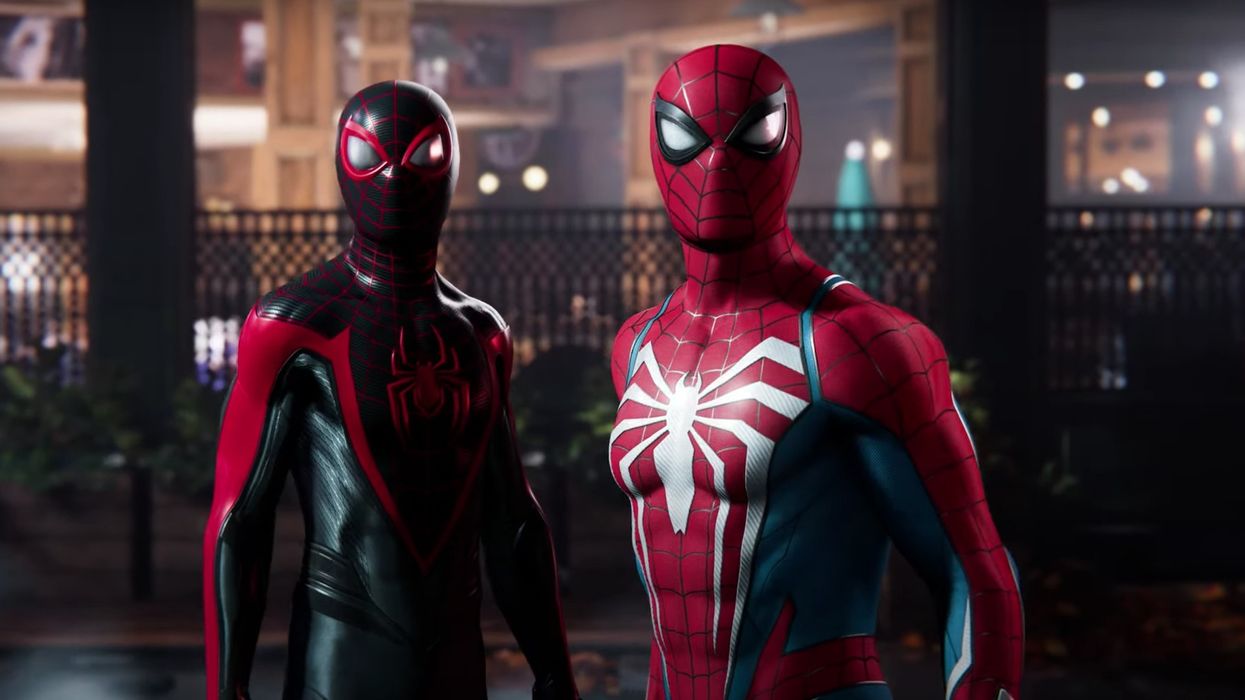My gaming memories before Kindergarten consist of nothing but Spider-Man, whether it was on Gameboy, PC, or Playstation 2. Swinging between rooftops over the toxic fumes clouding the streets of NYC (eerily foreshadowing recent events) in Spider-Man (2000) was a common recurring dream I had around that time.

As immersive and fun as that game was as a child, the true cultural reset was Spider-Man 2 (2004) for PlayStation 2, the movie tie-in free-roam game with an endlessly satisfying web-swinging mechanic. Webs actually attached to buildings unlike the predecessors, and you moved across Manhattan like a ball on a pendulum instead of just a flying sprite with a swinging animation.

The momentum from a well-timed jump off of your web transferred into a sprint on a rooftop, a leap across the buildings, and into a run along a wall. The capability for experimentation and testing the game’s limits for style gave me many years of enjoyment beyond the often lackluster story missions.
Around middle school in the early 2010’s, I traded in the PS2 and all its games for the Xbox 360 to play games like Halo and The Amazing Spider-Man (2012) movie tie-in game for the 360.

TASM had a more original story (treating it as a spin-off sequel to the movie instead of an underwhelming retelling of events) and better combat than the Spider-Man 2 game, but it moved away from some key exploration mechanics like true web swinging that made Spider-Man 2 so replay-able. Luckily, the 2004 title was backwards compatible for the 360, so I did get to continue reliving the old memories on my newer console from time to time.
As a member of the Xbox camp when Spider-Man (2018) came around, I didn’t get a chance to play much of the PS4 exclusive, but I would start to play the old games more and more. This summer, I stopped waiting around and bought the Marvel’s Spider-Man: Miles Morales Ultimate Edition – PS5 through Best Buy, as well as a new PS5. The game came with a download code for the remastered version of Marvel’s Spider-Man in addition to its sequel.

I could go into the storylines going on in Marvel’s Spider-Man, but ultimately I buy these games to explore, engage with the city, fight crime, and test the limits of Spider-Man’s abilities. Luckily, both games were a blast to experience and I would highly recommend seeing them for yourself.
For free-roaming, even with recency bias in mind, it’s my favorite game to play right now. Manhattan is gorgeous, lively, and I’m finding more to do and see that just couldn’t be accomplished with the technology of the previous games. I’m also glad that exploring the new Manhattan with the new swinging and parkour mechanics isn’t a rehash of what we’ve seen before, but rather a blend of many components that made the previous games so good.
Spider-Man 2 (2004) had a high barrier to entry for friends of mine that hadn’t tried web swinging in that type of system before, and TASM had more of an on-rails auto-swing feel where anyone could get from point A to B by simply holding a button and pushing forward to swing Spidey around. Insomniac’s swinging can be done differently by people with no experience and someone with a lot of skill and intricacy, but often times it will still look intentional and cool.
At the end of the day, the PS5 games definitely lack the feeling that Spider-Man 2 had in 2004. If you watch someone play the modern games, it probably looks as though web action, traversal and combat couldn’t get any better, but as mentioned in this video, fans of the older and more unforgiving swing designs may feel as though the modern Insomniac system is leaving players with less to learn in the long term.

In some cases, Insomniac’s creative choices sacrifice some of the long-term joy that could be found in those other games. You used to fall from great heights and pray you found a building to swing off of, or else you’d smack into the pavement and die. Even a web-swing that was cast too low could result in Spidey bumping into the ground and running with his web to hop back into the swing, messing up your momentum. This was never perfect, but Insomniac opts for zero fall-damage and an invisible floor that never lets Spidey touch the pavement as long as you start to swing before you hit the ground.
It’s clear that this can look super cool, and allows anyone to pull off movie-like feats. What’s lost is a sense of challenge that made the older titles funny, realistic, and made the player want to get better at swinging.

I’m sure the PS5 Spider-Men could deliver pizzas to residents of all the New York boroughs in a sequence of elegant hops, zips, and swings. However, YouTubers like Slyfincleton make niche speedrun videos of the 2004 pizza delivery missions for a reason: the skill involved in swinging well is most of the fun for them (and myself).

I’ll more than likely be shelling out full price for the upcoming Marvel’s Spider-Man 2 this fall, and I have Spider-Man 2 (2004) to thank for that. I love Insomniac’s games for what they are, and I won’t be surprised if I play them for years to come. I hope little things improve with future titles like casting multiple webs, slingshotting, loop-de-loops, catching webs on corners of buildings, and overall improvements to how Spidey hops and skips over roads, cars and rooftops.
I enjoy all of these games for various reasons, but I hope that the movement toward “on-rails” experiences doesn’t overtake some of the creativity that could be found when you let the user mess around with physics, even if it makes Spider-Man look bad.


Leave a comment